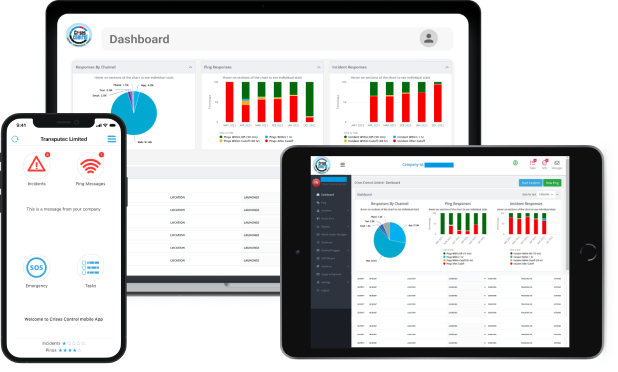When a critical situation arises, organisations often find themselves scrambling to alert the right people quickly and clearly. Whether it is a safety incident, IT outage, or urgent update, the ability to communicate efficiently can prevent confusion, reduce risk, and even save lives. But what happens when your current mass notification or incident management software doesn’t quite fit the way you work? You might be looking for a Singlewire alternative that better meets your needs.
Singlewire is a well-known name in mass notification software. It offers a range of solid features, but some organisations find it doesn’t quite match their evolving demands, whether that is more flexible communication options, easier setup, or better pricing. Crises Control has gained recognition as an effective and adaptable choice for businesses and public sector organisations that need more than just alerts. It combines wide-reaching notification capabilities with a strong incident management system that supports decision-making during emergencies.
This article will help you understand why Crises Control is seen as the best Singlewire alternative and how it can improve your communication and response during critical events.
Why Organisations Look for a Singlewire Alternative
The need for fast and reliable communication during emergencies is clear. Yet, many organisations discover their software isn’t built for the scale or complexity they face. Common challenges include:
- Reaching large, diverse groups easily. Organisations often struggle when they need to send messages to thousands of people across multiple channels, email alone won’t cut it.
- Simple operation under pressure. Staff who are not IT specialists need to send alerts quickly without fuss.
- Integrations with existing systems. Whether it’s security alarms, IT management tools or access control, communication software needs to fit with other platforms.
- Transparent, affordable pricing. Budgets vary widely, and unclear pricing models can create surprises.
- Managing the full incident lifecycle. Communication is only one part of crisis response; being able to track, manage, and analyse incidents is equally important.
Many of these pain points lead organisations to explore alternatives. They want a solution that’s flexible, reliable, and built to work across industries, from healthcare to education, corporate to public safety.
How Crises Control Meets These Needs
True Multi-Channel Communication
One of the strongest advantages of Crises Control is its ability to send messages across multiple channels at once. This means your alert can go out via SMS, email, voice call, mobile app push notification, desktop alert, Microsoft Teams, and even social media platforms like Twitter.
Imagine you have an urgent safety message. Crises Control lets you deliver that message to smartphones, desktops, landlines and social media all at once, making sure it reaches people wherever they are. This is especially important in large organisations where employees and stakeholders use different devices or may not have immediate access to email.
By offering so many channels, Crises Control improves the chances your message is seen and acted upon promptly, which is often critical during emergencies.
Incident Management That Goes Beyond Notifications
Communication alone does not solve an incident. You need a system to manage the event from start to finish. Crises Control combines mass notification with a full incident management platform, allowing teams to create, track, assign and close incidents through a single interface.
This means you can:
- See who has acknowledged alerts and who hasn’t.
- Manage workflows and assign tasks within the platform.
- Keep detailed logs and audit trails for compliance or review.
- Monitor incident progress in real-time to coordinate efforts efficiently.
Many systems only focus on sending alerts. Crises Control goes further by supporting your entire response process, turning communication into coordinated action.
Easy to Use with Minimal Training
When an incident happens, time is short and stress is high. Crises Control’s interface is designed to be intuitive and straightforward. Non-technical users can quickly send alerts, create groups, or activate predefined workflows without deep training or technical help.
This is a key difference for organisations where frontline staff or security teams, rather than IT experts, need to manage communications quickly and confidently.
Integrations That Work with Your Existing Technology
No organisation operates in isolation. You already have systems for security, IT management, access control, and more. Crises Control offers broad integration options and a flexible API to connect with these tools.
For example, if a security alarm triggers or an IT incident is detected, Crises Control can automatically send alerts to relevant teams, speeding up your response without manual steps. This level of automation helps maintain continuity and reduces human error.
Transparent and Affordable Pricing
Understanding the cost upfront is important for any organisation considering new software. Crises Control offers clear pricing models designed to be affordable for small organisations yet scalable for large enterprises.
This transparency removes the guesswork often associated with software pricing and allows you to budget confidently.
Real-World Benefits of Choosing Crises Control
Faster and More Reliable Communication
During an emergency, every second counts. Crises Control’s infrastructure ensures messages are delivered swiftly and reliably, minimising delays and reducing risk. The use of multiple channels means if one method isn’t available, others can pick up the slack.
Better Coordination Across Teams
Centralising incident management and communications means all involved parties have a shared view of the situation. Teams can assign tasks, update statuses, and keep detailed records, improving response quality and reducing duplicated efforts.
Flexibility for Different Industries
Crises Control adapts to a wide range of needs:
- Healthcare organisations can send patient safety alerts and coordinate rapid responses.
- Schools and universities can communicate emergency notifications to students, staff and parents.
- Businesses can manage IT incidents and operational disruptions smoothly.
- Government agencies can reach the public quickly during safety events.
The platform’s configurability means it can be tailored to fit the precise communication and management needs of any organisation.
Choosing the Right Alternative for Your Organisation
When you’re deciding on mass notification or incident management software, the best fit depends on your unique needs:
- What communication channels do you need to use?
- Do you require a full incident management system or just notifications?
- How important is integration with your existing technology?
- What budget constraints must you consider?
- How easy must the system be for your staff to use?
Crises Control addresses these questions head on with a flexible, feature-rich platform and pricing models that work for organisations of all sizes.
Conclusion
When communication during emergencies matters most, your choice of software can make a real difference. Crises Control offers a strong alternative to Singlewire by delivering comprehensive mass notification and incident management capabilities that adapt to your organisation’s needs.
With its multi-channel approach, easy operation, robust incident workflows, and clear pricing, Crises Control supports organisations aiming for timely, coordinated, and effective responses.
To discover how Crises Control can improve your crisis communication and incident management, contact the team today for a free demo.
Request a FREE Demo

